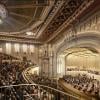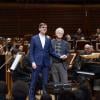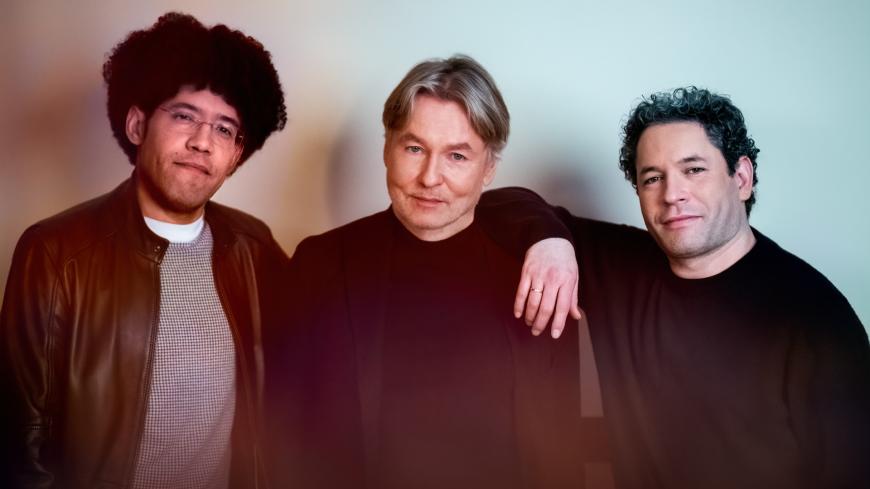
During the early months of the COVID pandemic, a time when concert halls were dark and the future looked uncertain, the top executives of California’s symphony orchestras had a standing appointment at 4 p.m. Fridays. It was their weekly conference call, a chance to commiserate and exchange information about how they were coping and what they were planning.
Hearing his colleagues’ reports, “I was struck by the remarkable work being done by some very small orchestras, which they were putting out digitally,” recalled Chad Smith, CEO of the Los Angeles Philharmonic. “I was reminded that the creativity of the California arts community is present in organizations big and small.”
As the crisis eased, Smith, Music and Artistic Director Gustavo Dudamel, and their counterparts at the San Francisco Symphony returned to an idea that had been floated before the lockdown: a collaborative project featuring both ensembles. Freshly aware of the talent and innovative spirit of their less-famous counterparts, they began to envision something much larger and more ambitious.
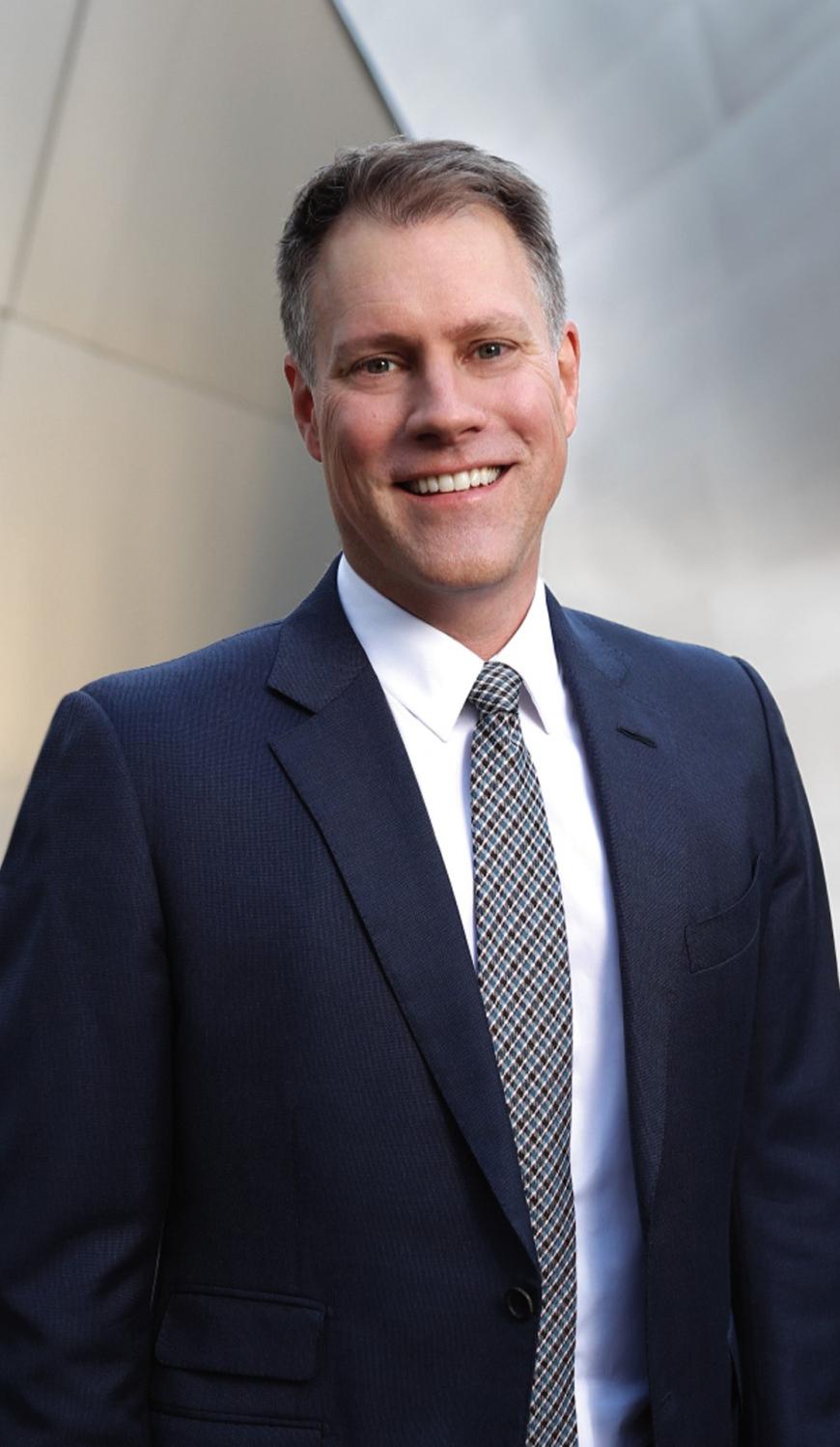
The result is the California Festival: A Celebration of New Music, which will take place Nov. 3–19, 2023, at venues throughout the state. More than 50 ensembles from Santa Rosa to San Diego will participate, all presenting music written during the past five years.
“The pandemic was an impetus for this broader collective effort,” Smith said. “The idea of doing something together became more inclusive — and more diverse.”
Diverse indeed: Festival participants will range from LA Opera to the Sacramento Youth Symphony, the USC Percussion Group to the Light Opera Theatre of Sacramento. Notably, this isn’t a metro-area-only affair. Numerous orchestras in midsize cities are participating, including those in Fresno, Santa Barbara, San Luis Obispo, and Monterey. So are several educational institutions, including Stanford University and the Colburn School.
“California — and Los Angeles specifically — have steadily earned a reputation as an epicenter for contemporary music,” said Maia Jasper White, executive director and co-artistic director of the L.A.-based chamber music ensemble Salastina. “This festival celebrates and reflects that fact, and we are honored to have been invited alongside a group of world-class artists and presenters.”
The festival is being overseen by the music directors of the state’s three largest orchestras: Dudamel, the SF Symphony’s Esa-Pekka Salonen, and the San Diego Symphony’s Rafael Payare.
“California holds a unique place in music and culture, not just in the United States but in the wider world as well. It brings out the unexpected and illuminates the unseen, moving even the most reserved among us,” they said in a joint statement.
“Our three orchestras, in partnership with other arts organizations from throughout this state, have come together to celebrate the sheer magnitude of California’s contributions to classical music and to dream of new ways that we can work together to express our deep appreciation for the environment, communities, and technological innovation that make this state so deeply unique.”
While providing artistic guidance, the three maestros are not picking the repertoire (which has yet to be announced). Each organization is programming its own concerts or productions, the only stipulation being they must include music written within the past five years.
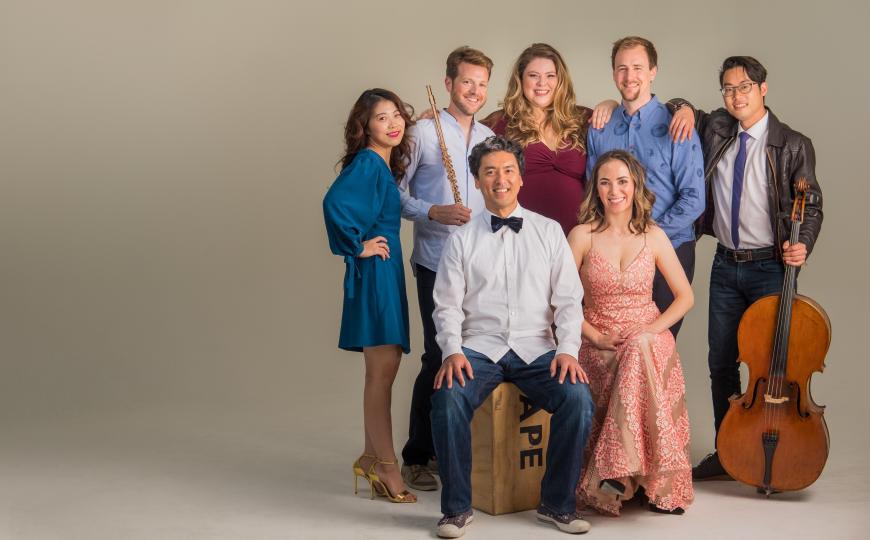
“What was very important for the music directors was that it wasn’t one person’s vision,” Smith said. “This festival reflects what the creative leadership in this part of the world thinks is the most interesting, most compelling new music that they want to present.”
“The fact that it’s not curated gives everybody a lot of freedom and the chance to engage in the innovation this state is known for,” said Martha Gilmer, CEO of the San Diego Symphony. ”I hope the festival shines a light on the depth and breadth of creativity found in this state.”
Gilmer noted that the festival, which will coincide with the reopening of the San Diego Symphony’s renovated concert hall, is not exclusively focused on new music. Many organizations, including hers, will also include more familiar works that complement the recently penned pieces.
But the performance of contemporary work is the festival’s central organizing principle.
“New music has had such a vibrant history in this state,” Smith said. “New work has, in many ways, defined the artistic institutions of California. It seems a natural progression for our statewide festival to focus on new voices.”
More information can be found on the festival’s website.


